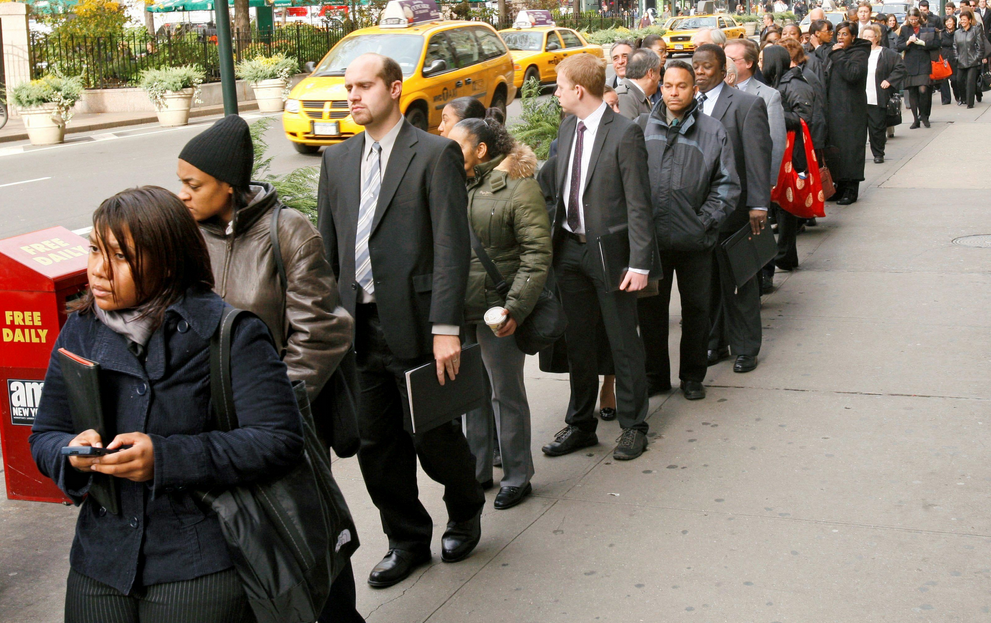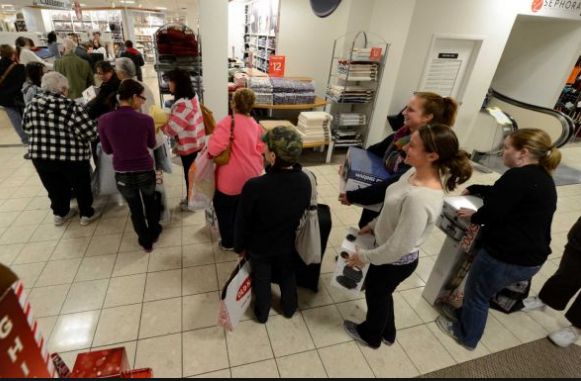Retail Sales Surge, But Claims Do Too
 Courtesy of Reuters: The number of Americans filing new claims for unemployment benefits rose sharply last week, reversing the prior three weeks declines, but a recent strengthening of the labor market likely remains intact.
Courtesy of Reuters: The number of Americans filing new claims for unemployment benefits rose sharply last week, reversing the prior three weeks declines, but a recent strengthening of the labor market likely remains intact.
In a separate report, U.S. retail sales rose solidly in November as Americans bought automobiles and a range of other goods, adding to signs of a strengthening economy that could draw the Federal Reserve closer to reducing the pace of monetary stimulus.
Initial claims for state unemployment benefits surged 68,000 to a seasonally adjusted 368,000, the Labor Department said on Thursday. That was the largest weekly increase since November 2012. Claims for the prior week were revised to show 2,000 more applications received than previously reported.
Economists polled by Reuters had expected first-time applications to rise to 320,000 last week. The four-week moving average for new claims, which irons out week-to-week volatility, rose 6,000 to 328,750.
A Labor Department analyst said no states had been estimated and there were no special factors influencing the report. He noted, however, that seasonal volatility, including a late Thanksgiving, made it difficult adjusting the data for seasonal variations. Jobless claims fell for much of November.
The labor market is strengthening, with nonfarm payrolls increasing solidly in October and November. The unemployment rate dropped to a five-year low of 7.0 percent in November. The claims report showed the number of people still receiving benefits under regular state programs after an initial week of aid increased 40,000 to 2.79 million in the week ended Nov. 30.
The number of Americans filing new claims for unemployment benefits rose sharply last week, reversing the prior three weeks declines, but a recent strengthening of the labor market likely remains intact.
 In a separate report, U.S. retail sales rose solidly in November as Americans bought automobiles and a range of other goods, adding to signs of a strengthening economy that could draw the Federal Reserve closer to reducing the pace of monetary stimulus.
In a separate report, U.S. retail sales rose solidly in November as Americans bought automobiles and a range of other goods, adding to signs of a strengthening economy that could draw the Federal Reserve closer to reducing the pace of monetary stimulus.
Initial claims for state unemployment benefits surged 68,000 to a seasonally adjusted 368,000, the Labor Department said on Thursday. That was the largest weekly increase since November 2012. Claims for the prior week were revised to show 2,000 more applications received than previously reported.
Economists polled by Reuters had expected first-time applications to rise to 320,000 last week. The four-week moving average for new claims, which irons out week-to-week volatility, rose 6,000 to 328,750.
A Labor Department analyst said no states had been estimated and there were no special factors influencing the report. He noted, however, that seasonal volatility, including a late Thanksgiving, made it difficult adjusting the data for seasonal variations. Jobless claims fell for much of November.
The labor market is strengthening, with nonfarm payrolls increasing solidly in October and November. The unemployment rate dropped to a five-year low of 7.0 percent in November. The claims report showed the number of people still receiving benefits under regular state programs after an initial week of aid increased 40,000 to 2.79 million in the week ended Nov. 30.
The Commerce Department said retail sales increased 0.7 percent last month after rising by a revised 0.6 percent in October. November’s retail sales increase was the largest in five months.
Economists polled by Reuters had forecast retail sales, which account for about 30 percent of consumer spending, advancing 0.6 percent after a previously reported 0.4 percent gain in October.
So-called core sales, which strip out automobiles, food services, gasoline and building materials and correspond most closely with the consumer spending component of gross domestic product, increased 0.5 percent after rising 0.7 percent in October.
That suggested consumer spending would likely step up from a two-year low touched in the third quarter. Spending is being supported by solid employment gains and steady income increases, which could help limit the drag from inventories on fourth-quarter GDP growth. Lower gasoline prices are also helping, though they are a drag on retail sales figures.
The steady stream of fairly upbeat data should give the Fed confidence to start cutting back its monthly $85 billion bond buying program at least by March. Retail sales last month were buoyed by a 1.8 percent jump in receipts at auto and parts dealers. That helped to offset a 1.1 percent drop in sales at gasoline stations.
Receipts at building materials and garden equipment stores rebounded 1.8 percent after falling 1.5 percent in October. There were also gains in receipts at furniture, electronics and sporting goods shops, among others. Sales at electronics and appliance stores rose 1.1 percent, while furniture store sales rose 1.2 percent. However, receipts at clothing stores fell 0.2 percent after rising 2.6 percent in October.
Category: General Update










